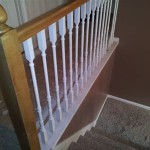Installing Tongue and Groove Flooring on Joists: A Comprehensive Guide
Installing tongue and groove flooring on joists is a rewarding project that can enhance the aesthetics of your home while increasing its value. Here's a comprehensive guide to help you tackle this task with ease:
1. Preparing the Joists
Ensure that the joists are level, stable, and in good condition. Remove any nails or screws protruding from the joists, and check if they are spaced at regular intervals (typically 16 or 24 inches apart). If necessary, install additional joists to provide adequate support for the flooring.
2. Installing the Underlayment
Installing an underlayment provides a moisture barrier, reduces noise, and enhances the flooring's performance. Unroll the underlayment so that it covers the joists and overlaps the edges by a few inches. Secure it using staples or a tack strip around the perimeter of the room.
3. Laying the First Row
Start laying the flooring parallel to the longest wall in the room. Use a spacer to maintain a consistent gap of approximately 1/4 inch around the edges for expansion. Begin at the wall with the groove facing the wall. Secure the flooring to the joists using nails or screws, with the nails driven at a slight angle.
4. Installing Subsequent Rows
Align the tongue of the next plank with the groove of the previous one. Tap the plank gently into place using a tapping block and a hammer. Ensure that the flooring is level as you proceed with each row.
5. Cutting Planks
To fit the flooring around obstacles or corners, you will need to cut planks. Measure and mark the cut line on the plank, and use a circular saw or a miter saw to make precise cuts. Always double-check your measurements before cutting.
6. Nailing or Screwing the Flooring
Secure the flooring to the joists using nails or screws. Use a nail gun or a hammer, and drive the fasteners at a 45-degree angle. Countersink the fasteners slightly below the surface of the flooring using a nail set or a screw gun.
7. Installing Trim and Moldings
After installing the flooring, cover the exposed edges around the perimeter of the room with baseboard molding. Use quarter-round or shoe molding to transition between the flooring and walls or other surfaces. Secure the trim using nails or adhesive.
Tips for Success
- Use a tapping block to protect the flooring while tapping it into place.
- Allow for expansion gaps around the edges of the room.
- Double-check measurements before cutting planks.
- Secure the flooring adequately using nails or screws.
- Install trim and moldings to enhance the aesthetics and protect the edges of the flooring.

How To Install Hardwood Floors Directly Over Joists Wood Floor Fitting

Fitting Wood Flooring Straight To Joists And Beyond Blog

How To Install A Subfloor On Joists Ana White

Laying Hardwood Flooring On Second Story With No Subfloor

Chipboard Flooring How To Lay P5 Tongue And Groove

5 Essential Tips For Tongue And Groove Flooring District Floor Depot

How To Lay An Engineered Oak Floor On Joists

Laying Hardwood Flooring On Second Story With No Subfloor

How To Install Hardwood Flooring Step By Forbes Home

Design Considerations In Engineered Wood Floor Systems Page 3 Of 4 Construction
Related Posts








